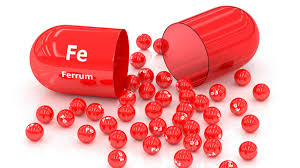
Iron Deficiency
One and a half page will be acceptable
Below is requirement and an example of my classmate.
For this part of the project, you will need to utilize the library database of scientific journal articles to:
a.search for 2 primary research papers regarding one of the topics listed below,
b.obtain a copy of the FULL paper (NOT just the abstract),
c. read it, and
d. summarize the research papers in a way that would make sense to the general public
You must use 2 different primary research papers (not review articles) as references. The two papers should be on the same topic so as to compare the two.
Summarize your findings in 250-500 words (excluding references). Cite all of your references using appropriate citation style such as APA, MLA, or AMA within the summary and your references at the end (see book references for examples).
IMPORTANT: Please use original words and be careful not to plagiarize. You must include your summary in this document AND post it on the ‘Iron project’ forum on the discussion board for full credit. (You can copy and paste into a discussion posting). ). If you have questions about what peer reviewed primary research papers are, please ask. The purpose is for you to find two different papers that did an experiment on the same topic. And give me your conclusions based on these two papers. What is your take home message?
Topics to choose from:
· Iron deficiency during pregnancy
· Iron and cognitive function in children
· Iron status in vegans
· Most effective form of oral iron supplementation
Grading Guidelines:
· Primary research paper appropriately chosen (i.e., primary research paper, published in scientific journals, NOT review articles, etc). No credit
if papers are not primary research.
· 2 pts: appropriate reference within summary and citations
· 1: posting on discussion board
· 4 pts: quality of summary. This should be adequately summarized so that the general public could understand the implications.
Example :
The purpose to the Prevalence of Iron Deficiency Anemia among Iranian Pregnant Women was to detect the average iron status for women who were in their 20- 40’s living in Iran. The study was limited to healthy individuals who were not refugees, had cancer, or were undergoing hemodialysis as these groups would stand as outliers and skew the data. A total of 11,037 participants were entered into the analysis (Barooti, et al., 2010). Of these, 42% regularly saw a physician to be tested every month while pregnant. The other 58% had regular house visits from the physician. Hematocrit tests and urine samples were taken for each visit. The maximum percent of pregnant women who had anemia was 95%. Out of those, 67% were in their second or third trimester. The percentage of anemia in Iranian women during pregnancy is considerably highter than that of most EMRO countries (Barooti, et al., 2010).
The second article, Screening for Iron Deficiency Anemia-Including Iron Supplementation for Children and Pregnant Women was a case study based on a 25 year old female who has a family history of anemia and is currently in her first trimester of pregnancy. Regular checkups were done throughout the entire pregnancy. Regular iron testings were done. During the first trimester, the iron levels based on the hematocrit testings were at a normal range of 40%. By the second trimester, the numbers have dropped significantly to 26%. Iron supplements were added to the diet and increased the iron level to 54% by the end of the third trimester (Mabry-Hernandez, 2017).
To summarize for patients, during the first trimester of pregnancy, iron levels remained relatively steady. The body is able to store enough eaten iron for
the body and the growing fetus. Begining the second and third trimesters, the fetus is growing and is in need of a larger iron supply which promotes normal
development. The iron input is less than the iron required which causes anemia. Anemia is the most common hematological disorder during pregnancy which causes complications for the mother and fetus (Barooti, et al., 2010). Eating a well balanced diet, including lean meats, beans, and fresh vegetables are a good source of iron. Iron supplements are also recommended to aquire enough iron to sustain the mother and fetus.
Works Cited
Barooti, E., Rezazadehkermani, M., Sadeghirad, B., Motaghipisheh, S., Tayeri, S., Arabi, M., et al. (2017, June). Prevalence of Iron Deficiency Anemia among
Iranian Pregnant Women. Retrieved June 26, 2017, from US National Library of Medicine National Institutes of Health:
http://www.ncbi.nlm.nih.gov/pmc/articles/PMC3719272/
Mabry-Hernandez, I. R. (2016, May 15). Screening for Iron Deficiency Anemia-Including Iron Supplementation for Children and Pregnant Women. Retrieved June
26, 2017, from American Family Physician: http://www.aafp.org/afp/2016/0515/p897.html
We can write this or a similar paper for you! Simply fill the order form!




